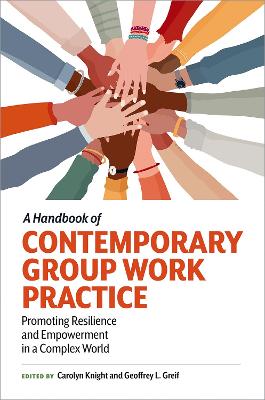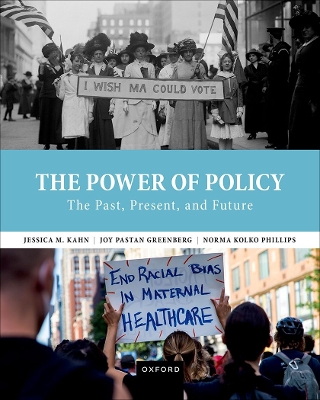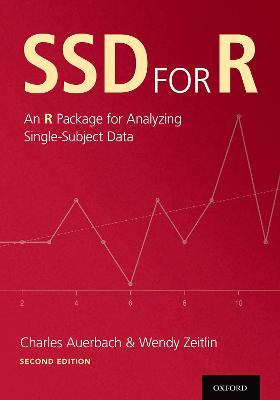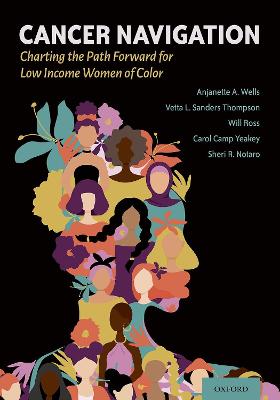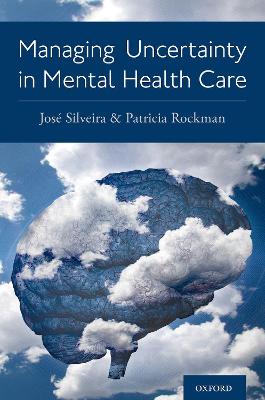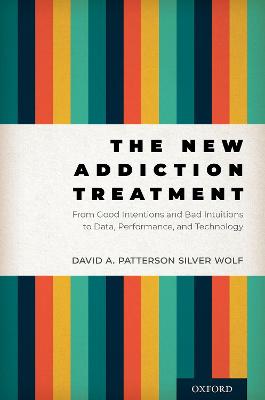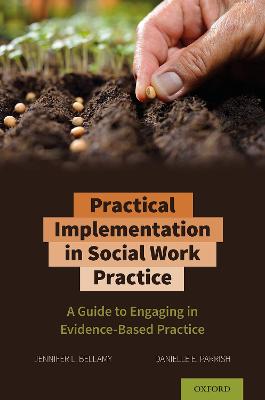Organizational Change for the Human Services
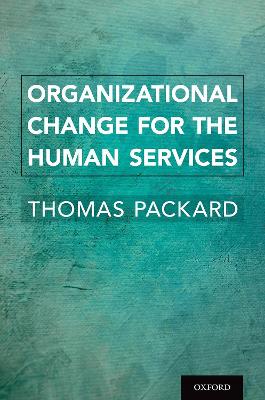 -10%
portes grátis
-10%
portes grátis
Organizational Change for the Human Services
Packard, Thomas
Oxford University Press Inc
10/2021
448
Dura
Inglês
9780197549995
15 a 20 dias
780
INTRODUCTION
Making sense of organizations
Purpose of the Book
Cases We Will be Studying
Father Joes' Villages
San Mateo County (California) Human Services Agency
San Diego Youth Services
San Diego Fire Department
Plan for the Book
Chapter 1: CHALLENGES AND OPPORTUNITIES
Framing Organizational Change
Some Conditions Requiring Change
Leading and Managing Change
To What Extent Can Planned Organizational Change Really Help?
Challenges in implementing organizational change
Organizational Change Defined
Summary
Reflection and focusing questions
Chapter 2: A CONCEPTUAL FRAMEWORK
Key Theories of Organizational Change
Planned vs. Unplanned Change
Levels of Change
Change Context, Content, and Process
A Conceptual Model of Planned Organizational Change
Problem, Need, Opportunity, or Challenge for Change
Change Goal
Assessment
Strategies
Tactics
Technologies and Methods
Outcomes of the Change Process
Essential Elements for Managing Complex Change
Summary
Reflection and focusing questions
Section 2: Change Leadership
Chapter 3: YOU AS A CHANGE LEADER: ASSESSMENT AND DEVELOPMENT
Assessing Yourself as a Change Leader
Change Management and Change Leadership
Change Leadership Competencies
Leadership traits
Task, Relationship, and Change Behaviors
Influence Skills
Ethics in Change Leadership
Leader Development
Summary
Reflection and focusing questions
Chapter 4: THEORIES FOR EFFECTIVE CHANGE LEADERSHIP
Leadership Theories for Change Leadership
Likert's Management Systems
Participative Decision Making
Exemplary Leadership
Transformational and Transactional Leadership
Adaptive leadership
Compassionate Leadership
Summary
Reflection and focusing questions
Section 3: A Change Model
Chapter 5: ASSESSMENT AND GOAL SETTING
Step 1. Identify the Problem, Need, Challenge, or Opportunity
Step 2. Identify the Desired Future State: the Change Goal
Step 3. Assess the Present
Assessing Context: The Big Picture
Assessing Content: What Needs to be Changed
Assessing Process: Aspects of the Change: Readiness and Capacity
Staff Readiness and capacity
Organizational Readiness
Organizational Capacity
Change Leader Capacity
Force Field Analysis
Summary
Reflection and focusing questions
Chapter 6: LAUNCHING THE CHANGE INITIATIVE
Step 4. Determine the Overall Change Strategy
Step 5. Communicate the Need for and the Desirability of the Change
Step 6. Create a Sense of Urgency
Step 7. Communicate the Change Vision
Summary
Reflection and focusing questions
Chapter 7: IMPLEMENTATION SYSTEMS AND PROCESSES 197
Step 8. Develop the Action System
Formal roles
Sponsor
Champion
Executive Team
Change Leadership Team
Other Change Agents
Other Stakeholders
Change processes
Step 9. Implement the Plan for Change
Implementation processes
Action teams
Additional Aspects of Change Process Implementation
Provide for staff the information and training needed to implement the change.
Provide adequate opportunities for team building and conflict management.
Clearly communicate progress on the change process throughout the organization.
Summary
Reflection and focusing questions
Chapter 8: SUPPORT AND RESISTANCE
Step 10. Develop and Maintain Support
Sources of Support
Top Management
Additional Management Support
Political Overseers
Collaborating Organizations and Community Partners
Sufficient Resources
Resistance
Summary
Reflection and focusing questions
Chapter 9: INSTITUTIONALIZATION AND EVALUATION
Step 11. Institutionalize the Change
Step 12. Evaluate the Change
Summary
Reflection and focusing questions
Section 4: Generic Change Methods
Chapter 10: USING CONSULTANTS
Types of consultants: Expert and Process
Types of Consultants: External and Internal
Internal consultants
External consultants
Selecting and using consultants
Organization Development
Summary
Reflection and focusing questions
Chapter 11: DATA COLLECTION AND ASSESSMENT
Action Research
Employee Surveys
The Management Audit
Client Surveys
Stakeholder Surveys
Organizational Performance Data
Appreciative Inquiry
Reflection and focusing questions
Chapter 12: CHANGE INTERVENTIONS
Team Building
Conflict Management
Role Clarification
Image Exchange/Intergroup Design
Transition Management
Large Group interventions
Reflection and focusing questions
Chapter 13: ADVANCING DIVERSITY, EQUITY, INCLUSION, AND SOCIAL JUSTICE
Background
Cultural Competence
Equity and Social Justice
Summary
Reflection and focusing questions
Chapter 14: QUALITY AND EFFICIENCY IMPROVEMENT PROCESSES
Total Quality Management
Continuous Quality Improvement
Plan Do Study Act
Work Flow Analysis
Cause and Effect Diagram
Lean Transformation
Six Sigma
Lean Six Sigma
Industrial Engineering
Summary
Reflection and focusing questions
Chapter 15: ORGANIZATION REDESIGN
Background and definitions
Dimensions of Organization Design
Organization Design as a Noun
Organizational Structure
Organizational Processes
Criteria for the Redesign of an Organization
Organization Design as a Verb
Criteria for an Effective Redesign Process
A Redesign Model
Business Process Reengineering: A Cautionary Tale
Summary
Reflection and focusing questions
Chapter 16: CHANGING ORGANIZATIONAL CULTURE
Culture and Climate Defined
Characteristics of Effective Cultures
Culture Assessment
Culture Change
Employee Perspectives
Tactics for Culture Change
Summary
Reflection and focusing questions
Section 5: Change Methods For Human Service Organizations
Chapter 17: IMPROVEMENT METHODS FOR HUMAN SERVICE ORGANIZATIONS
Capacity building
Assessing Capacity Building Needs
Improving Organizational Capacity
Best Practices and Benchmarking
Evidence-based Practice Implementation and Implementation Science
EPIS: Exploration, Adoption/Preparation, Implementation, and Sustainment
LOCI: Leadership and Organizational Change for Implementation
NIRN: National Implementation Research Network
CFIR: Consolidated Framework for Implementation Research
Learning Organizations and Knowledge Management
Summary
Chapter 18: CHANGE MODELS FOR HUMAN SERVICE ORGANIZATIONS
Change Models for HSOs
The ARC Model
The Sanctuary Model
Getting to Outcomes
Design Team
Innovation and Intrapraneurship
Cutback management
Cutbacks: Content
Cutbacks: Process
Summary
Chapter 19: STAFF-INITIATED ORGANIZATIONAL CHANGE
SIOC Models
SIOC and Worker Empowerment
Pre-assessment
Assessment
The content of the change
The process aspects of the change
Preinitiation
Initiation
Implementation
Institutionalization
Evaluation
Summary
Reflection and focusing questions
Section 6: Wrap Up
Chapter 20: WHERE WE HAVE BEEN AND WHERE YOU MAY GO
Where We Have Been
A Planned Change Model
You as a Change Leader
Some Final Thoughts
Where do you want to go from here?
Reflection and focusing questions
APPENDIX
1. Leader Development Plan
2. Management Audit
3. Role Functions Worksheet
4. Responsibility Chart
5. Transition Management: Team Member
6. Transition Management: Team Leader
7. The Organizational Change Tactics Questionnaire
8. Organizational Change Research: Some Challenges and History
9. Evidence for the Model
References
Index
About the Author
INTRODUCTION
Making sense of organizations
Purpose of the Book
Cases We Will be Studying
Father Joes' Villages
San Mateo County (California) Human Services Agency
San Diego Youth Services
San Diego Fire Department
Plan for the Book
Chapter 1: CHALLENGES AND OPPORTUNITIES
Framing Organizational Change
Some Conditions Requiring Change
Leading and Managing Change
To What Extent Can Planned Organizational Change Really Help?
Challenges in implementing organizational change
Organizational Change Defined
Summary
Reflection and focusing questions
Chapter 2: A CONCEPTUAL FRAMEWORK
Key Theories of Organizational Change
Planned vs. Unplanned Change
Levels of Change
Change Context, Content, and Process
A Conceptual Model of Planned Organizational Change
Problem, Need, Opportunity, or Challenge for Change
Change Goal
Assessment
Strategies
Tactics
Technologies and Methods
Outcomes of the Change Process
Essential Elements for Managing Complex Change
Summary
Reflection and focusing questions
Section 2: Change Leadership
Chapter 3: YOU AS A CHANGE LEADER: ASSESSMENT AND DEVELOPMENT
Assessing Yourself as a Change Leader
Change Management and Change Leadership
Change Leadership Competencies
Leadership traits
Task, Relationship, and Change Behaviors
Influence Skills
Ethics in Change Leadership
Leader Development
Summary
Reflection and focusing questions
Chapter 4: THEORIES FOR EFFECTIVE CHANGE LEADERSHIP
Leadership Theories for Change Leadership
Likert's Management Systems
Participative Decision Making
Exemplary Leadership
Transformational and Transactional Leadership
Adaptive leadership
Compassionate Leadership
Summary
Reflection and focusing questions
Section 3: A Change Model
Chapter 5: ASSESSMENT AND GOAL SETTING
Step 1. Identify the Problem, Need, Challenge, or Opportunity
Step 2. Identify the Desired Future State: the Change Goal
Step 3. Assess the Present
Assessing Context: The Big Picture
Assessing Content: What Needs to be Changed
Assessing Process: Aspects of the Change: Readiness and Capacity
Staff Readiness and capacity
Organizational Readiness
Organizational Capacity
Change Leader Capacity
Force Field Analysis
Summary
Reflection and focusing questions
Chapter 6: LAUNCHING THE CHANGE INITIATIVE
Step 4. Determine the Overall Change Strategy
Step 5. Communicate the Need for and the Desirability of the Change
Step 6. Create a Sense of Urgency
Step 7. Communicate the Change Vision
Summary
Reflection and focusing questions
Chapter 7: IMPLEMENTATION SYSTEMS AND PROCESSES 197
Step 8. Develop the Action System
Formal roles
Sponsor
Champion
Executive Team
Change Leadership Team
Other Change Agents
Other Stakeholders
Change processes
Step 9. Implement the Plan for Change
Implementation processes
Action teams
Additional Aspects of Change Process Implementation
Provide for staff the information and training needed to implement the change.
Provide adequate opportunities for team building and conflict management.
Clearly communicate progress on the change process throughout the organization.
Summary
Reflection and focusing questions
Chapter 8: SUPPORT AND RESISTANCE
Step 10. Develop and Maintain Support
Sources of Support
Top Management
Additional Management Support
Political Overseers
Collaborating Organizations and Community Partners
Sufficient Resources
Resistance
Summary
Reflection and focusing questions
Chapter 9: INSTITUTIONALIZATION AND EVALUATION
Step 11. Institutionalize the Change
Step 12. Evaluate the Change
Summary
Reflection and focusing questions
Section 4: Generic Change Methods
Chapter 10: USING CONSULTANTS
Types of consultants: Expert and Process
Types of Consultants: External and Internal
Internal consultants
External consultants
Selecting and using consultants
Organization Development
Summary
Reflection and focusing questions
Chapter 11: DATA COLLECTION AND ASSESSMENT
Action Research
Employee Surveys
The Management Audit
Client Surveys
Stakeholder Surveys
Organizational Performance Data
Appreciative Inquiry
Reflection and focusing questions
Chapter 12: CHANGE INTERVENTIONS
Team Building
Conflict Management
Role Clarification
Image Exchange/Intergroup Design
Transition Management
Large Group interventions
Reflection and focusing questions
Chapter 13: ADVANCING DIVERSITY, EQUITY, INCLUSION, AND SOCIAL JUSTICE
Background
Cultural Competence
Equity and Social Justice
Summary
Reflection and focusing questions
Chapter 14: QUALITY AND EFFICIENCY IMPROVEMENT PROCESSES
Total Quality Management
Continuous Quality Improvement
Plan Do Study Act
Work Flow Analysis
Cause and Effect Diagram
Lean Transformation
Six Sigma
Lean Six Sigma
Industrial Engineering
Summary
Reflection and focusing questions
Chapter 15: ORGANIZATION REDESIGN
Background and definitions
Dimensions of Organization Design
Organization Design as a Noun
Organizational Structure
Organizational Processes
Criteria for the Redesign of an Organization
Organization Design as a Verb
Criteria for an Effective Redesign Process
A Redesign Model
Business Process Reengineering: A Cautionary Tale
Summary
Reflection and focusing questions
Chapter 16: CHANGING ORGANIZATIONAL CULTURE
Culture and Climate Defined
Characteristics of Effective Cultures
Culture Assessment
Culture Change
Employee Perspectives
Tactics for Culture Change
Summary
Reflection and focusing questions
Section 5: Change Methods For Human Service Organizations
Chapter 17: IMPROVEMENT METHODS FOR HUMAN SERVICE ORGANIZATIONS
Capacity building
Assessing Capacity Building Needs
Improving Organizational Capacity
Best Practices and Benchmarking
Evidence-based Practice Implementation and Implementation Science
EPIS: Exploration, Adoption/Preparation, Implementation, and Sustainment
LOCI: Leadership and Organizational Change for Implementation
NIRN: National Implementation Research Network
CFIR: Consolidated Framework for Implementation Research
Learning Organizations and Knowledge Management
Summary
Chapter 18: CHANGE MODELS FOR HUMAN SERVICE ORGANIZATIONS
Change Models for HSOs
The ARC Model
The Sanctuary Model
Getting to Outcomes
Design Team
Innovation and Intrapraneurship
Cutback management
Cutbacks: Content
Cutbacks: Process
Summary
Chapter 19: STAFF-INITIATED ORGANIZATIONAL CHANGE
SIOC Models
SIOC and Worker Empowerment
Pre-assessment
Assessment
The content of the change
The process aspects of the change
Preinitiation
Initiation
Implementation
Institutionalization
Evaluation
Summary
Reflection and focusing questions
Section 6: Wrap Up
Chapter 20: WHERE WE HAVE BEEN AND WHERE YOU MAY GO
Where We Have Been
A Planned Change Model
You as a Change Leader
Some Final Thoughts
Where do you want to go from here?
Reflection and focusing questions
APPENDIX
1. Leader Development Plan
2. Management Audit
3. Role Functions Worksheet
4. Responsibility Chart
5. Transition Management: Team Member
6. Transition Management: Team Leader
7. The Organizational Change Tactics Questionnaire
8. Organizational Change Research: Some Challenges and History
9. Evidence for the Model
References
Index
About the Author

